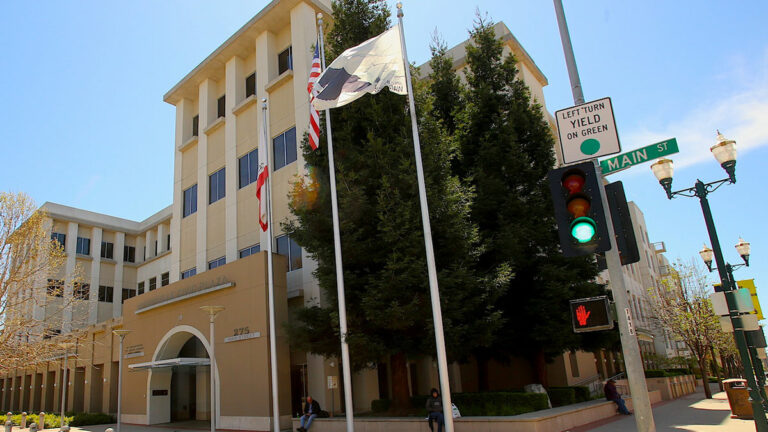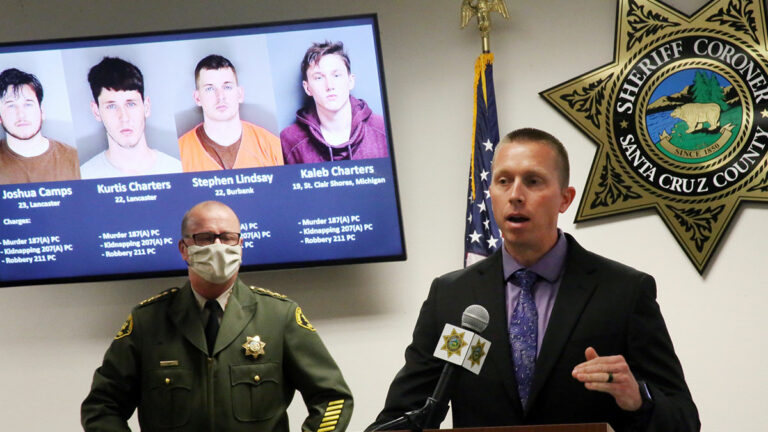It took roughly a decade for Watsonville to fully recover from the Great Recession, and officials fear the Covid-19 pandemic’s mass closures could send the city into a similar financial quagmire.
As restaurants and shops have closed, and auto sales—Watsonville’s top sales tax generator—have slumped, the city has seen its recent stable budgetary projections collapse. Finance Department Director Cindy Czerwin predicts the city will face a deficit of roughly $5.7 million in the coming fiscal year as the community tries to recover.
While that deficit pales in comparison with neighboring cities such as Santa Cruz and Monterey, both of which are facing deficits of roughly $10 million in this fiscal year alone, Watsonville’s economic recovery is expected to take several years, while those tourism-heavy communities are expected to rebound in a fraction of that time.
The city predicts it will be in a $7.8 million hole two years from now, which will increase to roughly $8 million the year after. Czerwin’s projections have Watsonville beginning its slow recovery in 2023-24, reducing the deficit to $6.9 million.
Santa Cruz, according to a staff report from its April 28 city council meeting, will face a $6 million deficit next fiscal year and expects to slice it in half by the following year.
“We’re expecting that as the economy starts to reopen, [recovery] will likely be slower for Watsonville than for some of the other areas,” Watsonville City Manager Matt Huffaker says.
‘SERVICE-DRIVEN’ APPROACH
The city has asked every department to slice its budget by 10% for the first of what Huffaker says could be multiple looming cuts. He says the city is implementing a hiring freeze, keeping several positions vacant, laying off most of its part-time and seasonal staff and eliminating “discretionary” spending such as travel, training and other large purchases.
He also got the OK from the city council to use $2.2 million of its emergency reserves, extend a set of early retirement incentives and reinstate a voluntary time-off program, which allows employees to reduce their hours but maintain benefits. The retirement program is aimed at employees on the pricey CalPERS “classic” program, which even before the pandemic was throwing the city’s finances into a predicament, Huffaker says.
When asked if all departments would be treated equally during the cuts, Huffaker says the city would be taking a “service-driven” approach to reductions, trimming where they anticipate there will be a drop in demand. That includes departments that cannot provide services because of the shelter-in-place restrictions, and where there will be a slowdown in the economy.
“It’s safe to say that some of those reduction measures may look different from one department to another based on the way this crisis is affecting our city operations,” Huffaker says.
The draft budget was finalized this week and will be distributed to the public before the end of the month. It will then come to the council for approval in June.
UNKNOWN TERRITORY
Huffaker says he did not know what the next round of cuts could look like, or when they might come. Czerwin will provide quarterly updates to the council and ask for adjustments when and where they are needed. There is little hope those updates will carry good news unless the city receives help from the state or federal government, Huffaker says.
The Coronavirus Aid, Relief, and Economic Security Act did little to address the shattered budgets of local governments in communities of 500,000 residents or fewer. But a new economic stimulus package from Speaker of the House Nancy Pelosi dubbed the HEROES Act could hand those municipalities some aid.
That roughly $3 trillion package includes, among other things, hazard pay for healthcare workers and first responders, an extension of unemployment benefits, another round of stimulus checks for most Americans and nearly $1 trillion in aid for state and local governments. President Donald Trump said the bill would be “dead on arrival” on the Senate floor, but Republican lawmakers have publicly said they are willing to negotiate with Democrats for certain aspects of the package.
At the state level, the city and its Monterey Bay neighbors earlier this month penned a letter to Gov. Gavin Newsom, asking that he allocate at least $15 billion to shore up the leaking budgets of California’s small- and medium-sized cities. The 18 Monterey Bay cities say they are anticipating they will lose, collectively, $40 million of general fund revenues through this fiscal year, and fall into a $122 million hole the following year.
Huffaker says he was “hopeful” help will eventually come, but the city will not bank on the “unknown” when developing its roadmap out of the economic predicament.
“In many respects it does feel like we’re building the airplane as we fly, and trying to make careful, prudent financial decisions without overreacting to this really dire situation we find ourselves in,” he says.
FUTURE OUTLOOK
Though the final economic impact of the Covid-19 pandemic will not be known until years from now, Huffaker says the numbers emerging from the first three months of the shutdown are worrisome. The county’s unemployment rate has skyrocketed from 3.5% to over 20%, hotels are sitting emptier than ever and Watsonville’s major sales tax generators say their sales are down by roughly 70% through the first quarter of 2020.
Santa Cruz County has met state requirements to further reopen its economy, but officials believe the speed of the subsequent recovery will largely depend on consumers’ confidence in how safe it is to re-enter public places and their purchasing power. The city will have limited influence on those factors, but it plans to use every tool available to spark its economic rebound.
Two of those tools are updating rules and drafting large-scale plans that open the city to developers and businesses. Watsonville is still pushing through its Downtown Specific Plan, which will serve as a comprehensive guide for development in the corridor, and will look to update its aging general plan if development slows. It will also try to update its cannabis rules to allow dispensaries, increased cultivation and delivery service, among other things.
“As we pull out of this and the economy recovers,” Huffaker says, “we want to be ready.”
One of the few bright spots in the otherwise muddled outlook has been a slight resurgence in developers’ willingness to continue projects. Community Development Department Director Suzi Merriam says large developments such as MidPen Housing’s 72-unit affordable housing project on Miles Lane are still moving forward. Bill and Neva Hansen have also pushed ahead two Main Street projects: The Residence, a sleek 50-unit apartment complex, and the planned restructuring of the vacant Gottschalks building that will house Watsonville Prep School.
“We’re not yet seeing projects completely die or go away,” she says.
But Merriam, who was an associate planner for the city during the 2008 recession, says there are still too many unanswered questions to say that the recent uptick is a sign things are stabilizing. Mass layoffs—both those already enacted and upcoming—will undoubtedly have a ripple effect on the economy, she says.
“All we’re trying to do is keep processing applications, keep being available for the community and hoping for the best,” she says.
































